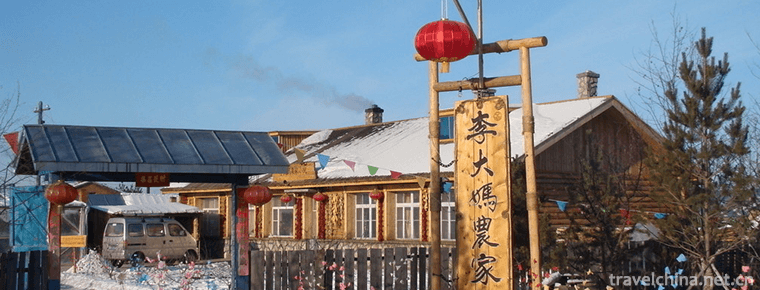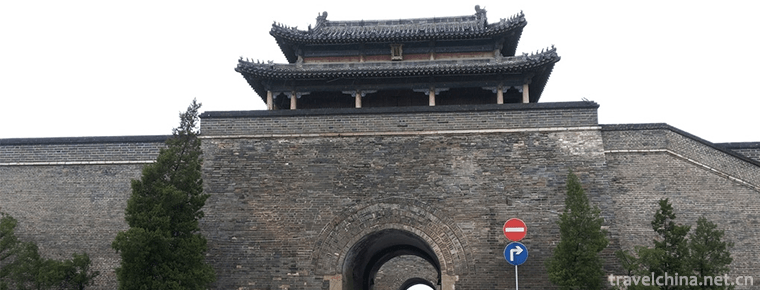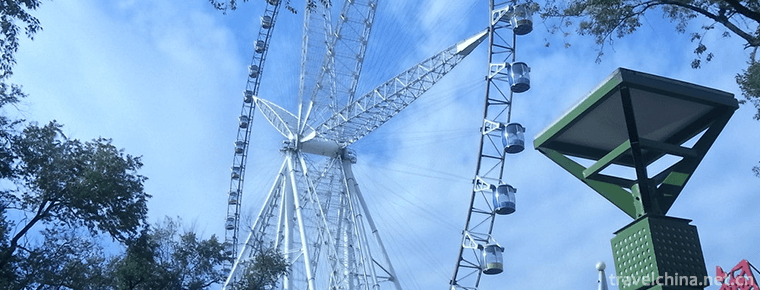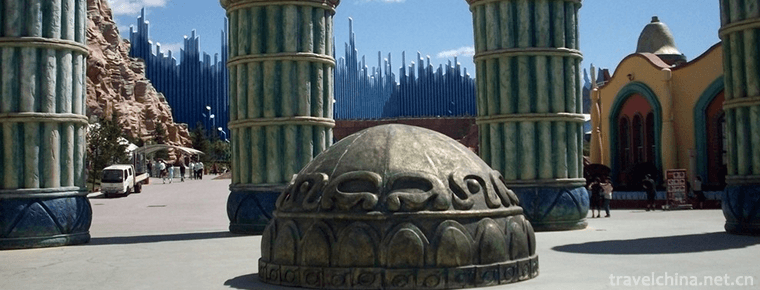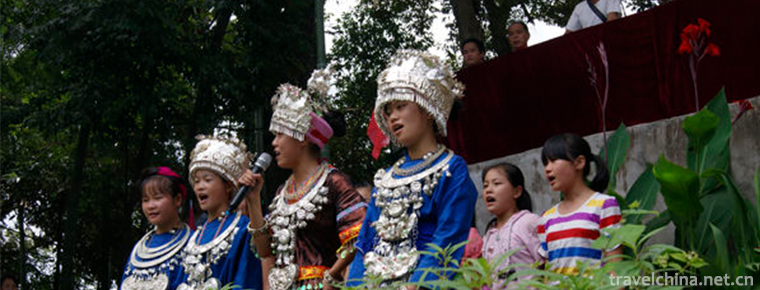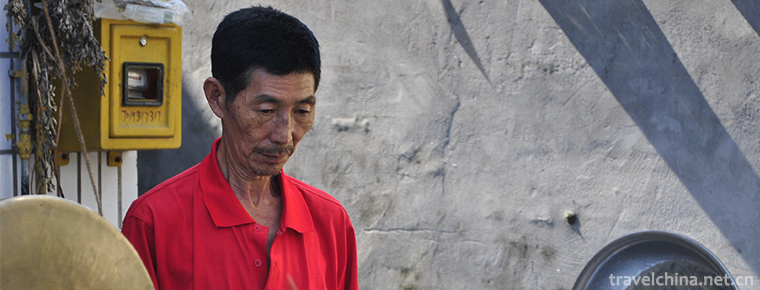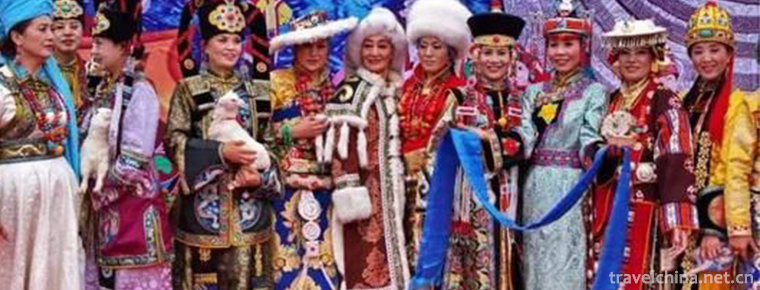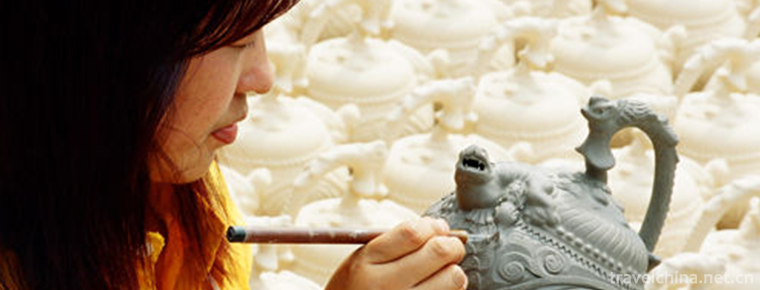hubei drum
hubei drum
The original name of Hubei drum is "drum book", also known as "drum storytelling" and "drum Beijing tune", etc. It is a traditional rap art popular in Xiaogan, Huanggang and Wuhan. In 1950, the name of the Great Drum in Hubei Province was named, and it was widely circulated in Hubei Province.
On June 7, 2008, the "Hubei Drum" jointly declared by Wuhan City and Tuanfeng County of Hubei Province was listed in the second batch of national intangible cultural heritage list with the approval of the State Council.
historical origin
The original drum script in Hubei has the same clan relationship with the traditional drum-ci-type rap art in northern China, and the drum-ci (drum script) is closely related to the story-telling (commentary) in history.
When Buddhism prevailed in the Tang Dynasty, believers not only talked and sang Buddhist scriptures and historical stories, but also talked and sang about folk incidents, such as "Qiuhu Novels" and "Chang Yichao Bianwen". By the Song Dynasty, from "Bianwen" to drum ci, there were some professional scripts. After polishing and processing by literati, these scripts have a higher artistic quality. From Ming Dynasty to Qing Dynasty, drum lyrics became more and more popular in the north and gradually spread to the south.
The history of Drum Books in Hubei Province is rarely recorded in the official history. From the inheritance relationship between drum calligraphers and apprentices, it can be inferred that in the late Qing Dynasty, drum calligraphers were well-known performers and apprentices. It must have lasted longer before that. Among them, the early famous artist Ding Haizhou (Ding Tieban) is said to have come from Shandong Province to Wuhan, Hubei Province to make a living by offering art. He taught five apprentices, including Huangyushan, Pan Hanchi, Wang Mingle, Chen Qianwen, Zhang Mingzhi, Fu Qungang and Hu Wei, who have experienced eight generations of inheritance. At the same time, there are also some famous artists of Gushu such as Wei Yuanzong (Weiguangshan), Liu Yuanzhong (Liu Huangchuan) and Gong Boting, Liu Yuanpeng in Henan Province.
Gushu artists from the north still keep the characteristics of northern drum lyrics when they sing. They use the northern accent, hold two crescent-shaped steel sickles (or iron, copper) in one hand, and stick wooden sticks in the other hand to beat drums and sing. Later, in order to be easily accepted by the people of Hubei, their disciples gradually switched to the Hubei accent and changed their singing tune, gradually adopting the local people's favorite tune. Then, the steel sickle was gradually replaced by cloud plate, the big drum was replaced by the small drum, and the rap was also welcomed by the local people with a local accent, and the popularity was becoming wider and wider until the vast areas of Wuhan, Eastern Hubei and Northern Hubei. In this way, Drum Book took root, blossomed and finalized in Hubei Province, and became an important kind of music in Hubei Province.


hubei drum
-
Arctic Village Tourism Scenic Area
Arctic Village Tourist Scenic Spot: National AAAAA Class Tourist Spot, the most attractive scenic spot in 2014, and the northernmost scenic spot in China.
Views: 268 Time 2018-12-05 -
Qu Fuming Gucheng
Qufuming Old Town: World Cultural Heritage, one of the three holy cities in the world, national AAAAA tourist attractions, National Scenic spots, national key cultural relics protection units, one of
Views: 187 Time 2018-12-08 -
Harbin Amusement Park
Harbin amusement park is located at the junction of the outer Road area and Nangang District. It was founded in 1958. Originally known as Harbin Cultural Park, it covers an area of 22.8 hectares.
Views: 116 Time 2019-01-13 -
Zhangye Danxia National Geological Park
Zhangye Danxia National Geological Park is the only Danxia landform and color hilly landscape complex area in China. Located at the northern foot of Qilian Mountains, 30 kilometers south of Linze Coun
Views: 206 Time 2019-03-16 -
Changying Century City
Changying Century City, located in Nanguan District, Changchun City, Jilin Province, was founded in 2003. It is a comprehensive tourist area integrating science and technology, adventure, performing a
Views: 277 Time 2019-03-17 -
Forty eight Zhai Song Festival
The forty-eighth Village Song Festival is a northern Dong dialect Song Festival in Tianzhu County, Guizhou Province, China. It is a traditional national festival featuring Dong
Views: 374 Time 2019-05-01 -
Liang Pings Gong and drum
Liangping Gong and drum is a kind of traditional folk instrumental music spread in Liangping District of Chongqing. In Liangping, the predecessors said that "Shu people Chao shan, gongs and drums
Views: 305 Time 2019-05-13 -
Mongolian Costume
Mongolian costumes, also known as Mongolian robes, mainly include gowns, belts, boots, jewelry and so on. However, there are differences in styles due to different regions. Mongolian costume has a str
Views: 134 Time 2019-06-03 -
Firing Techniques of Yaozhou Kiln Ceramics
Yaozhou kiln is a treasure of Chinese traditional ceramic technology. It was created in the Tang Dynasty and matured in the Five Dynasties. It reached its peak in the Song Dynasty and declined gradual
Views: 185 Time 2019-07-11 -
Introduction to Chengdu Giant Panda Base
Chengdu Giant Panda Breeding and research base (hereinafter referred to as the base) is located at 1375, Waibei panda Avenue, Chenghua District, Chengdu City, Sichuan Province, China. It is 10 kilometers away from the city center and more than 30 kilometers
Views: 232 Time 2020-12-13 -
Yibin tertiary industry
In 2019, the real estate development investment in Yibin City is 35.74 billion yuan, an increase of 14.5% over the previous year. Among them, residential investment was 27.018 billion yuan, an increase of 18.0%; the investment of office building was 4
Views: 385 Time 2020-12-18 -
Dazhou social security
In 2019, the per capita disposable income of Dazhou residents is 22995 yuan, an increase of 10.1%. The per capita disposable income of urban residents was 33823 yuan, an increase of 9.5%. Among them, salary income was 18783 yuan, an increa
Views: 125 Time 2020-12-20
